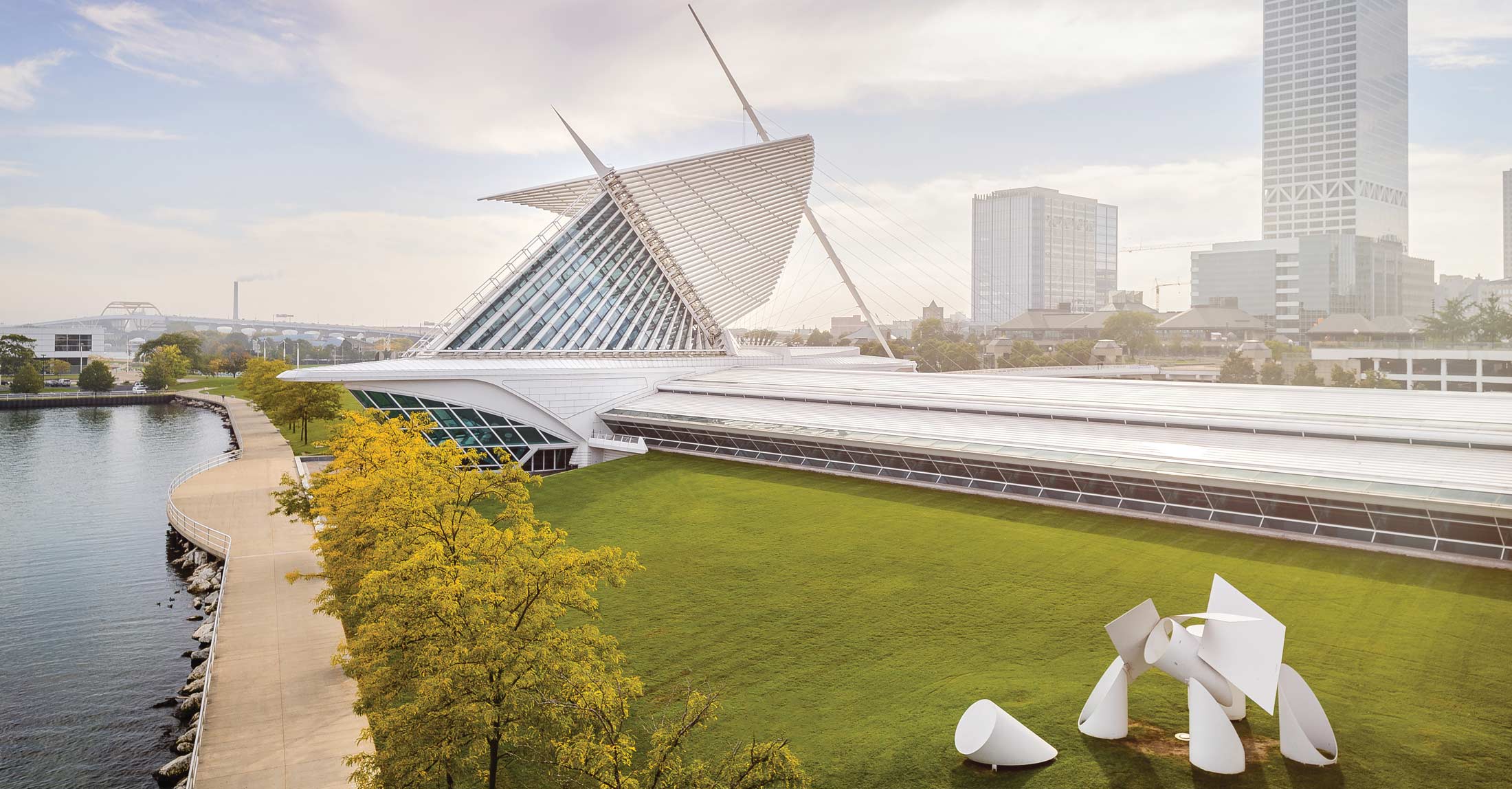
Posters of Paris closing soon
Exhibition celebrates the art of Toulouse-Lautrec and the Paris Belle Époque
Posters of Paris resurrects the boulevards of nineteenth-century France
Milwaukee, Wis. – This summer, the Milwaukee Art Museum transports visitors to nineteenth-century Paris with its feature exhibition, Posters of Paris: Toulouse-Lautrec and His Contemporaries. Closing September 9, the exhibition brings together the finest French examples from the golden age of the poster.
Advertising everything from theatre productions to the debaucherous cancan, bicycles to champagne, brightly hued, larger-than-life-size posters with bold typography and playful imagery punctuated the streets of turn-of-the-century Paris. Posters of Paris features more than one hundred of these posters (including a few designs that were originally censored) by artists hailed as masters of the medium: Henri de Toulouse-Lautrec, Jules Chéret, Pierre Bonnard, and Alphonse Mucha, and others. These artists drew from an array of styles, from Byzantine and Rococo to Realist and Art Nouveau.
“These works celebrated the dawn of new entertainment, new products, and new technology,” said Mary Weaver Chapin, exhibition curator. “The posters were audacious, colorful, bawdy, and sometimes even profane. Art critics praised the artistic posters for bringing joy and color to daily life and for giving Paris a free ‘museum for the masses,’ ‘an open-air exhibition’ that changed daily as new posters were pasted up,” said Chapin. “Some critics went further, describing the posters as superior to the paintings found in exhibitions.”
Posters were the popular tools for advertising and communication at the time, similar to today’s social media. The arrival of a new poster was newsworthy and could draw a crowd. In some cases, police intervention was required. Billposting itself turned competitive and evolved into public theater, adding to the spectacle one encountered on the streets.
“By the 1890s, artistic posters covered the boulevards throughout the city; they were posted on billboards, scaffolding, Morris columns, kiosks, in shop windows, and even pulled through the streets on mobile publicity carts,” said Chapin. “These posters were the object of intense fascination, and the term affichomanie (poster mania) was invented to describe the craze. Paris would not have been Paris without them.”
Posters were so popular that collectors stole them from billboards almost as soon as they were pasted up. New markets emerged to meet the demand; posters were both collectors’ items and fashionable home décor. Print dealers started to sell posters and publishers offered subscriptions to portfolios with the most popular images of the day in more manageable, reduced sizes. Posters that found their way into private homes eventually entered the collections of museums all over the world.
In addition to the dazzling posters, the exhibition includes rare preparatory studies and maquettes that show how artists developed their designs from the drawing board to the final lithographic poster.
Posters of Paris: Toulouse-Lautrec and His Contemporaries will be on view from June 1–September 9. Additional programming and lectures, as well as a fully illustrated catalogue, accompany the exhibition.
The exhibition sponsored by Milwaukee Art Museum’s Friends of Art, PNC Bank, and Bud and Sue Selig in honor of Jeffrey H. Loria, and is curated by Mary Weaver Chapin, formerly associate curator of prints and drawings at the Milwaukee Art Museum, curator of graphic arts at the Portland Art Museum. Posters of Paris: Toulouse-Lautrec and His Contemporaries will travel to the Dallas Museum of Art.
ABOUT THE MILWAUKEE ART MUSEUM
The Milwaukee Art Museum’s far-reaching holdings include more than 30,000 works spanning antiquity to the present day. With a history dating back to 1888, the Museum houses a collection with strengths in 19th- and 20th-century American and European art, contemporary art, American decorative arts, and folk and self-taught art. The Museum includes the Santiago Calatrava–designed Quadracci Pavilion, named by Time magazine as “Best Design of 2001.” For more information, please visit www.mam.org.
###
